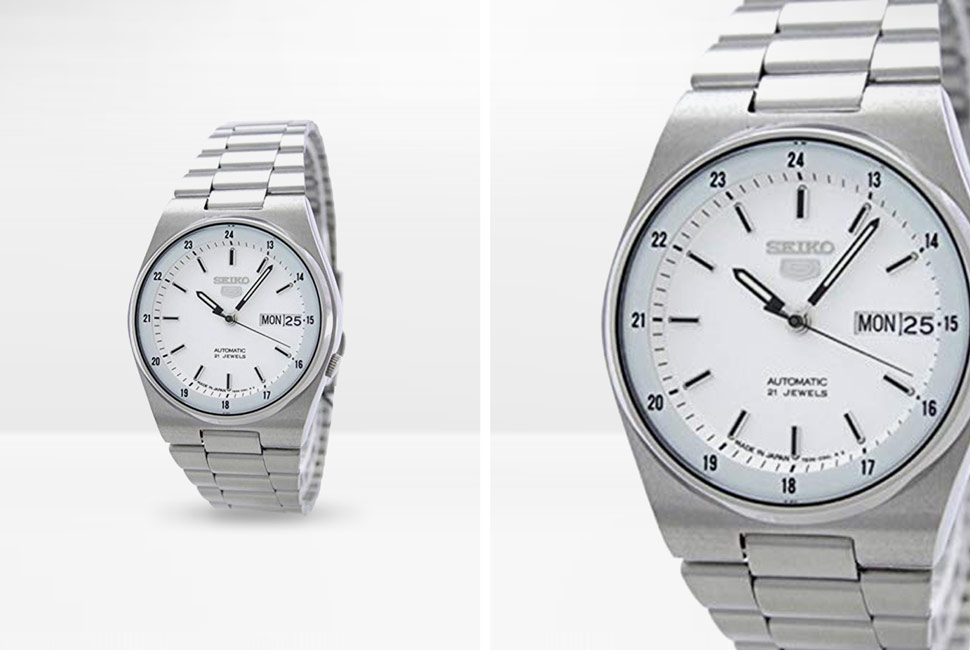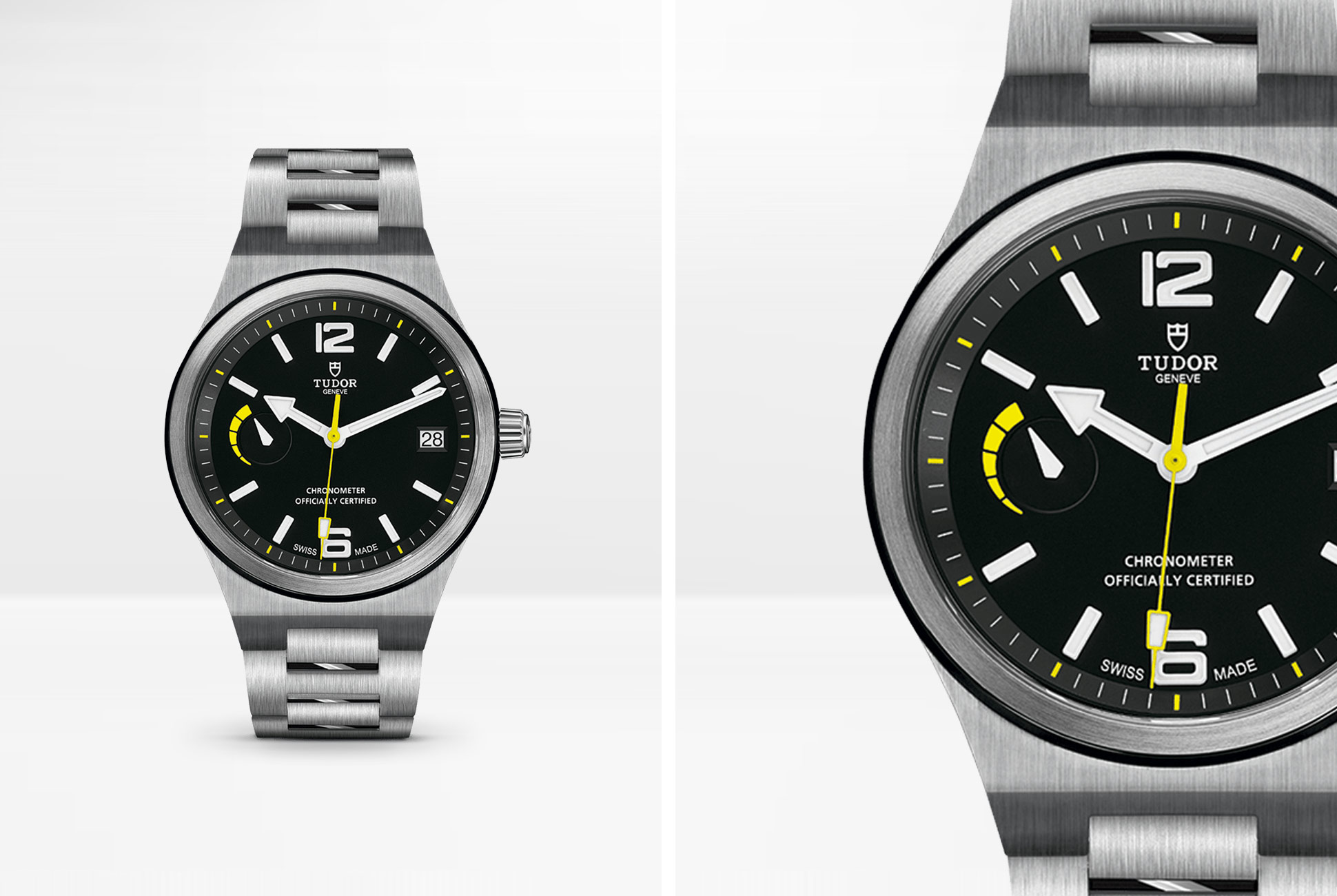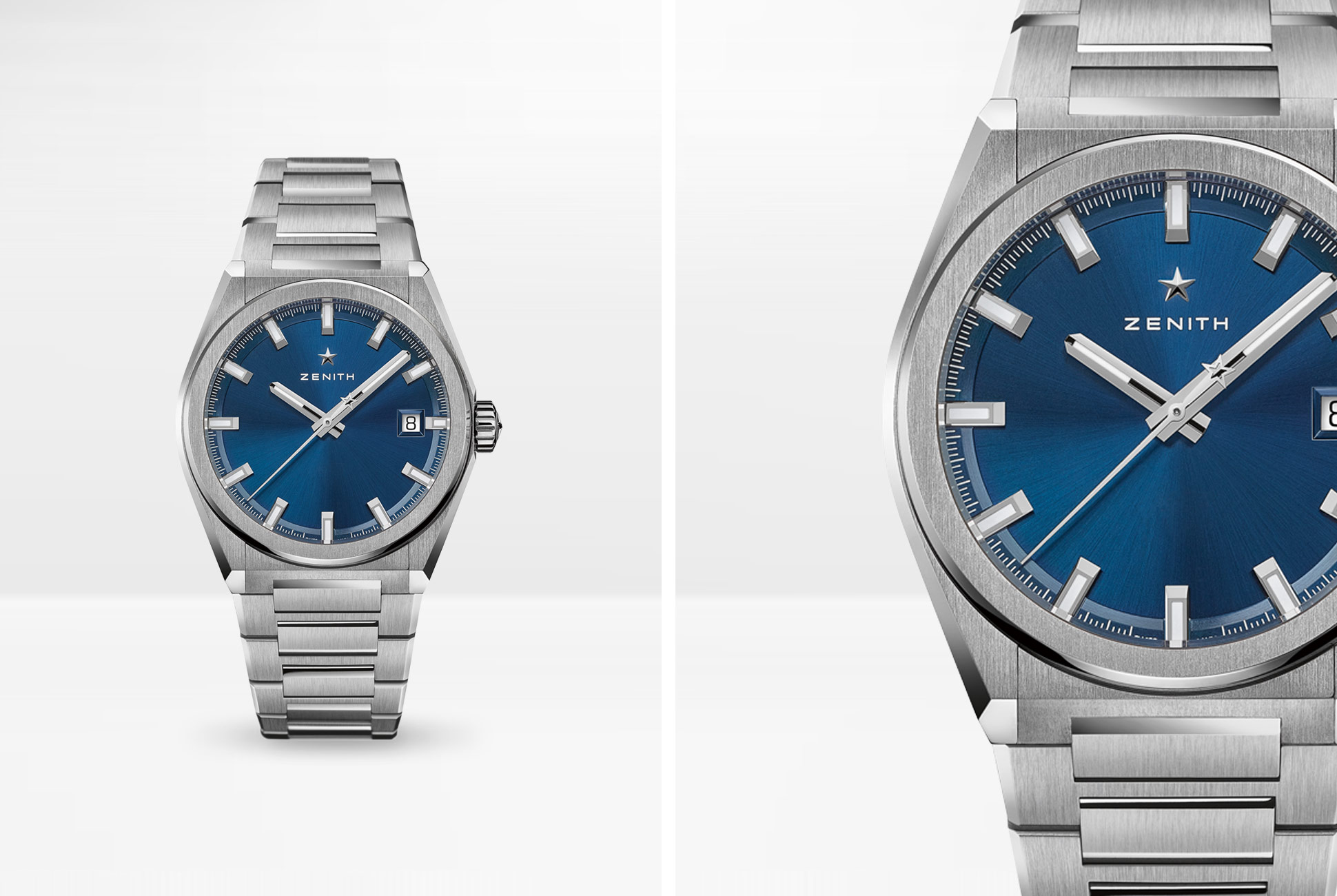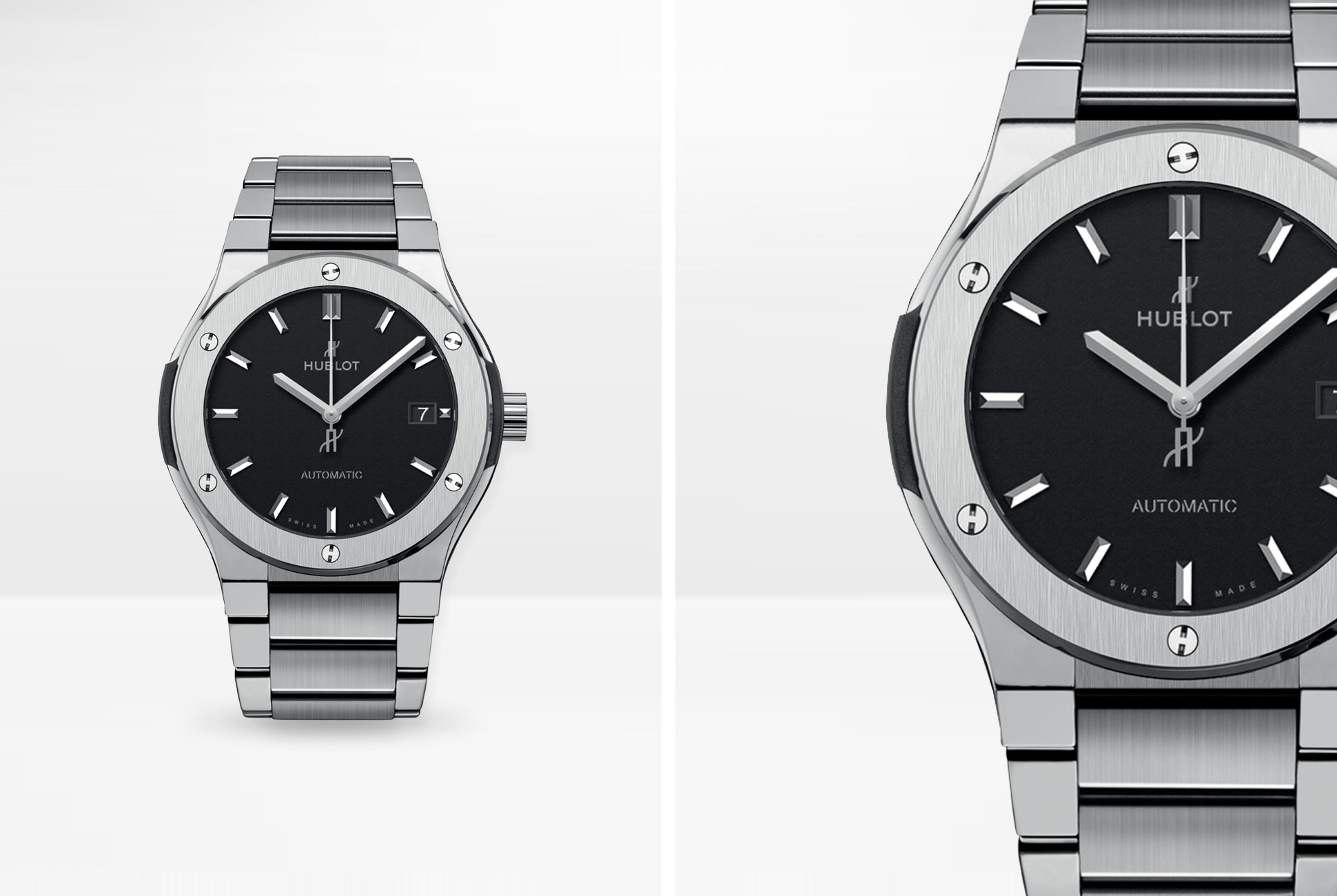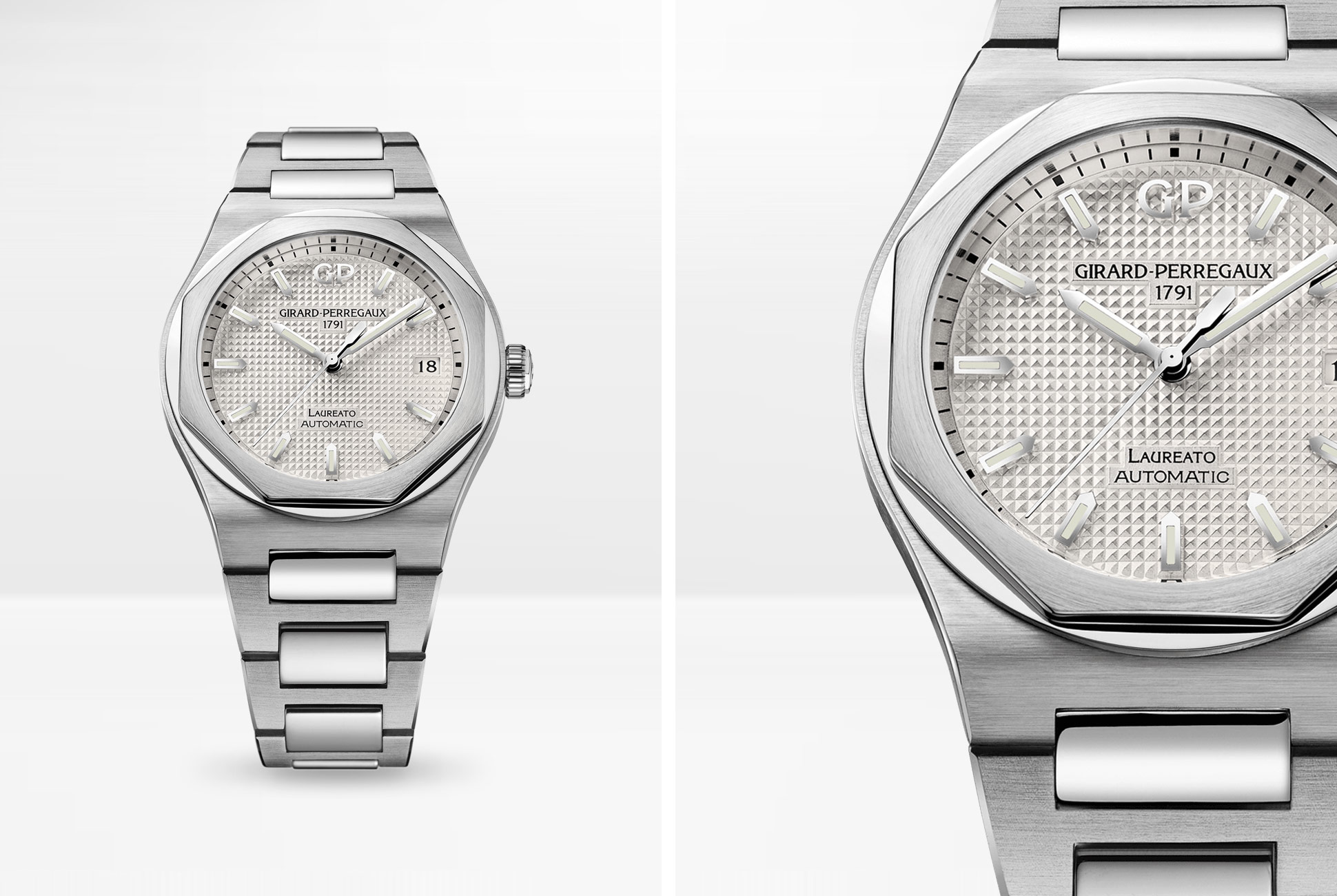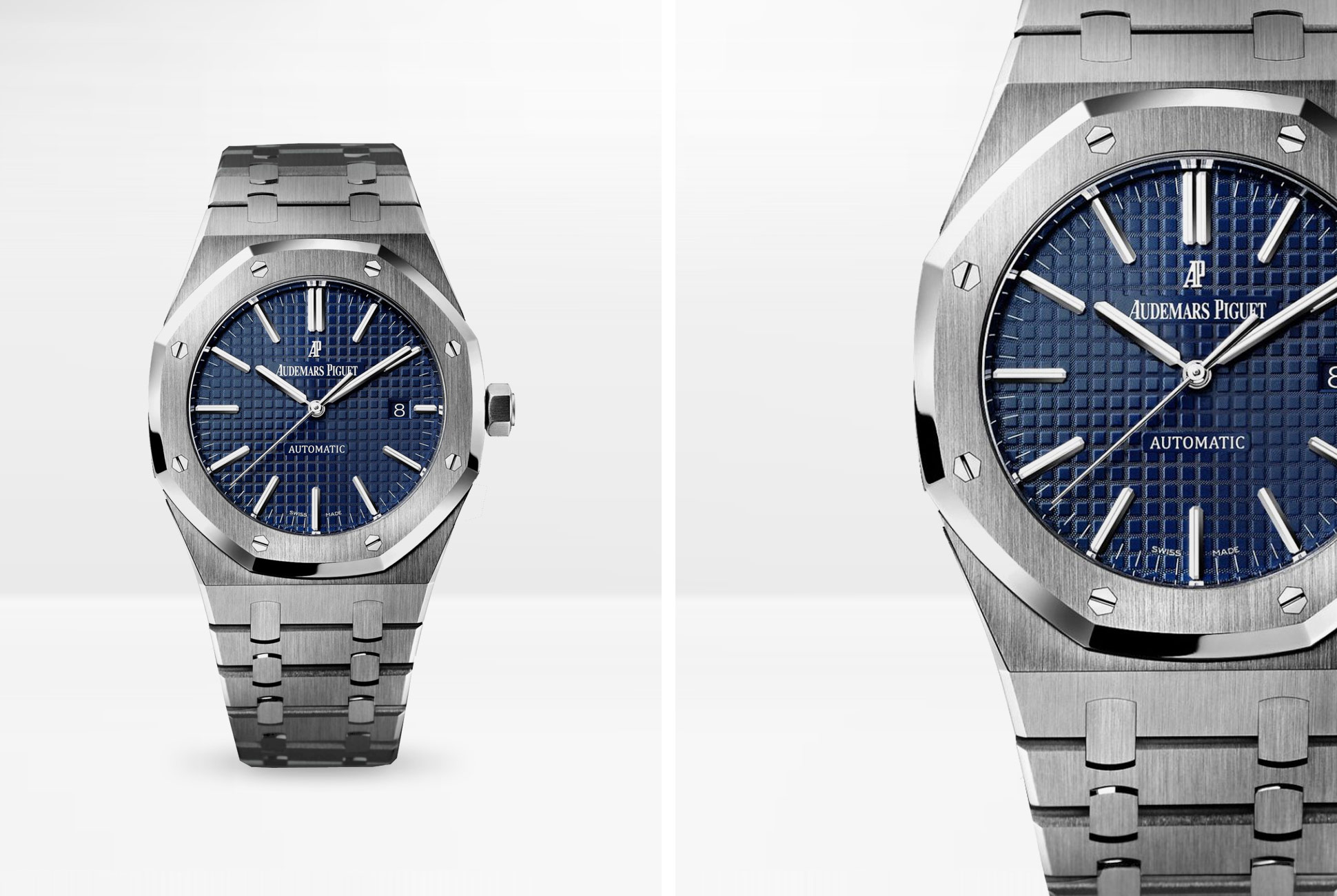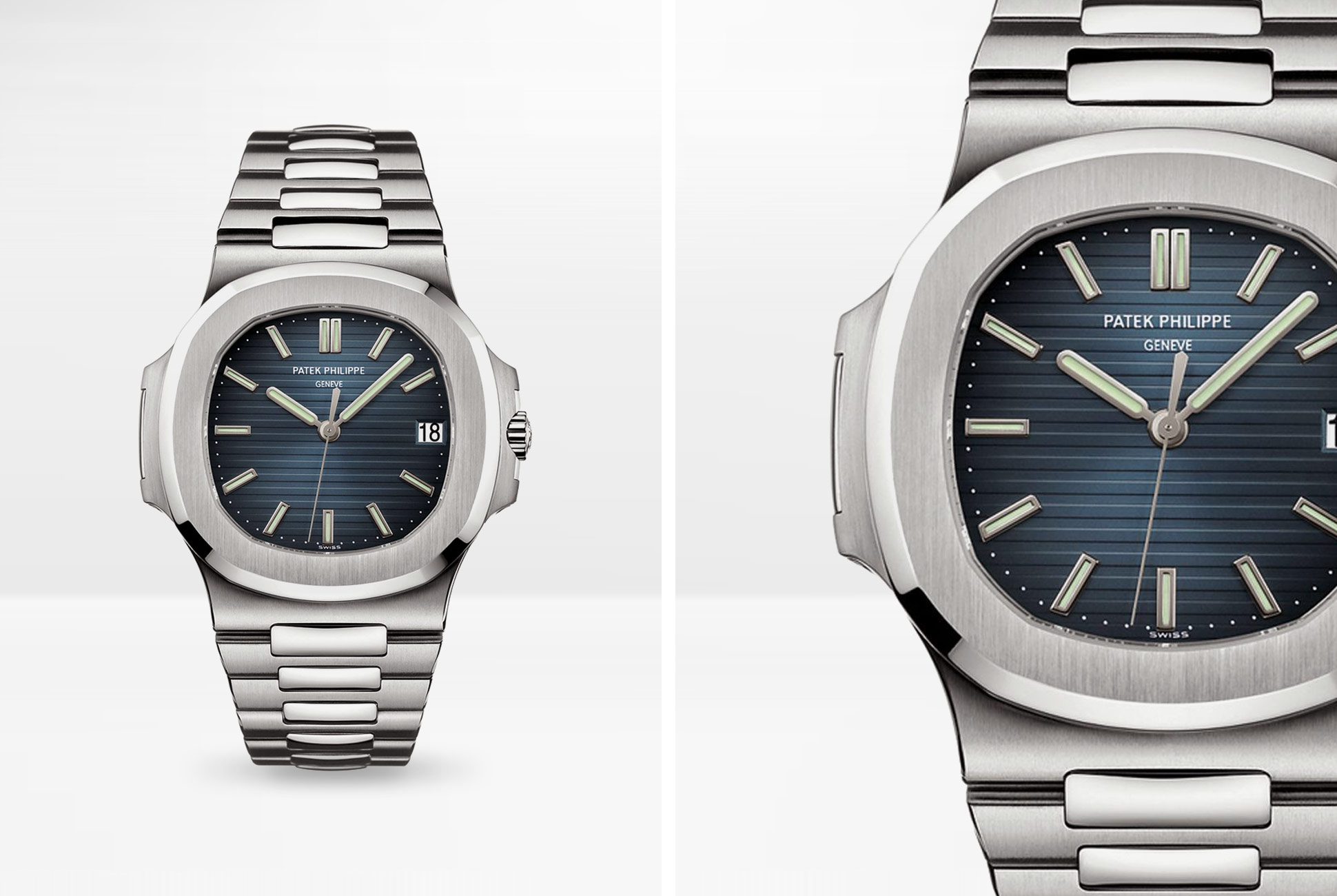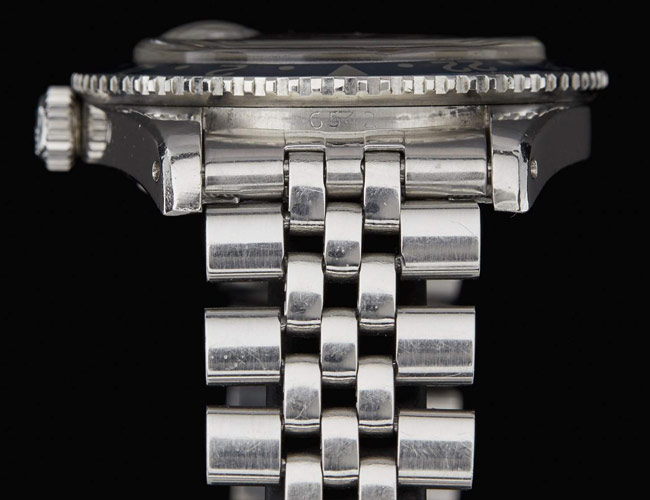The story is watchmaking lore: on the night before 1971’s Basel Fair, the managing director Audemars Piguet, on the edge of financial ruin, called Gerald Genta asking for “an unprecedented steel watch.” The next morning, Audemars Piguet had its design, which would form the basis for the Royal Oak. That’s the story, anyway.
Here’s something we can say for certain, though: the Royal Oak was ahead of its time, and like many things that were ahead of their time it was both a sales flop (it took years to sell out of the initial production run) and inspiration for countless other watches that would follow. What was essential to the Royal Oak design, and what would appear in many imitators through the 1970s, was an integrated bracelet that eschews the ubiquitous and universal lug-and-spring bar setup for a seamless connection between case and bracelet.
Many other top-tier watchmakers like Girard-Perregaux, Vacheron Constantin and Patek Philippe would introduce their own luxury sports watches with integrated designs; many of those designs persist today and are considered iconic to their respective manufacturers. What’s less apparent is just how many other watchmakers would use the layout. Omega, for instance, used the integrated setup on its “Cosmic” Seamasters, while Rolex would use the design for its one-and-only quartz model. Other lower-cost watchmakers, like Seiko and Tissot, would also introduce their own integrated designs, too.
Are there tangible and practical benefits to an integrated bracelet? There are not. In fact, there are a couple of drawbacks. Because these watches don’t use a typical lug-and-spring bar design they cannot use just any watch strap; at best, your alternative to a bracelet is a proprietary rubber or leather strap designed by the manufacturer that will, almost certainly, cost a small fortune. And if you’re buying a vintage or used watch with an integrated bracelet you better hope it comes with all of its original links because if it doesn’t, and it can’t fit your wrist, you really have no other way to wear it.
The only real benefit is an aesthetic one, but what a benefit indeed: a case that flows, uninterrupted, into a bracelet feels almost futuristic, even if the concept was conceived in the 1970s. Much like a Concorde jet, or a Bertone-designed supercar, it’s a relentlessly clean, aerodynamic and optimistically forward-thinking departure from conventional design tropes. It’s not a coincidence that the Concorde, wedge-era supercars and Genta-inspired sports watches still feel fresh today.
Though there are few integrated bracelet designs that you can buy today, those that exist are, with very few exceptions, the original designs from high-end manufacturers that debuted in the 1970s – which is a shame. Given that the vintage watch nostalgia cycle seems to cycle ever closer to the ’70s, it only seems fitting that the integrated design would make a resurgence. Whether or not the trend will in fact resurface remains to be seen, but for now, these are some of the few options you can buy brand new.
Seiko 5 SNXM17J5
You’d be forgiven for thinking most Seiko 5’s were just field watches, as these are what you most often find for sale in the US, but this reference SNXM17J5 is one of the many, seemingly endless variants of the 5 that have been made over the years. It’s powered by the humble but reliable caliber 7S26, and can be had temptingly cheap. In addition to featuring an integrated design, the watch comes with a creamy white recessed dial and measures in at a compact 35mm in diameter and 11mm thick.
Movememnt: Seiko 7S26 automatic
Size: 35mm
Water resistance: Labled “Water Resistant”
Tudor North Flag
Though somewhat overshadowed by Tudor’s many new watch releases since its debut, the Tudor North Flag remains one of the brand’s most important timepieces. When it launched back in 2015, it was the vehicle for the brand’s first in-house movement and a stark contrast to many of the brand’s heritage-inspired designs. The North Flag, as it so happens, is in fact inspired by an old Tudor reference — the Ranger II — but if anything, the fact that it feels like a brand new design speaks volumes about how fresh the integrated look can still feel today.
Movement: Tudor MT5621 automatic
Size: 40mm
Water resistance: 100m
Zenith Defy Classic
Released at Baselworld 2018, the Zenith Defy Classic is the entry-point into the growing, technically-focused Defy range. The Classic lacks the super-high frequency movement of other Defy watches, but it does feature a case and bracelet made from titanium, an appropriate material befitting the Classic’s clean, sleek lines. Similarly, the in-house automatic movement inside features a silicon escapement, a boon both to accuracy and reliability.
Movement: Zenith Elite 670 SK automatic
Size: 41mm
Water resistance: 100m
Hublot Classic Fusion
Hublot is known for making some pretty wild designs and using some equally insane materials, but the Hublot Classic Fusion is much more pared-down than its stablemates. The watch’s integrated design is constructed from titanium and features both satin and polished finishing, giving the finished product a two-tone-like effect. Further, working in the watch’s favor is the fact that it’s available in a few sizes, ranging from 33mm to 45mm, providing plenty of choice to prospective buyers.
Movement: Hublot HUB1112 automatic (Sellita SW300-1 base)
Size: 33, 38, 42 or 45mm
Water resistance: Et harum quidem rerum facilis es
Girard-Perregaux Laureato
Born in the mid-1970s, amidst a sea of other Genta-inspired luxury sports watches, the Laureato is a handsome design, once forgotten, and recently revived. Like the sports watches from other watchmakers of its standing, the GP features a case and bracelet expertly finished and a dial adorned with Clau du Paris texturing. When the Laureato first came to the scene in 1975, it did so with a quartz movement, but today features an in-house automatic movement.
Movement: Girard-Perregaux GP03300-0030 automatic
Size: 38mm
Water resistance: 100m
Audemars Piguet Royal Oak
The watch that started it all. The Gerald Genta-designed Royal Oak first arrived in 1972, and though it was criticized for being large and overpriced, it essentially spawned a new genre of luxury sports watches. And even though the Royal Oak inspired many other watches, nobody can really match the mighty Oak’s bracelet design, an intricate network of small, exquisitely-finished pieces of stainless steel.
Movement: Audemars Piguet 3120 automatic
Size: 37mm
Water resistance: 50m
Patek Philippe Nautilus
Launched in 1976, the Nautilus was Patek’s response to the Royal Oak. It too was designed by Genta, featuring many of his motifs from the era, most notably a porthole-like octagonal bezel and an integrated bracelet design. The Nautilus has remained a fixture in the Patek lineup since, and does something remarkable: it makes the Royal Oak look like a steal, with an eye-watering MSRP just short of $30,000.
Movement: Patek Philippe 324SC automatic
Size: 40mm
Water resistance: 120m
While watch collectors are truly spoiled for choice these days as far as strap and bracelet options are concerned, there are certain classic options that have stood the test of time and don’t seem to be losing popularity. Read the Story

